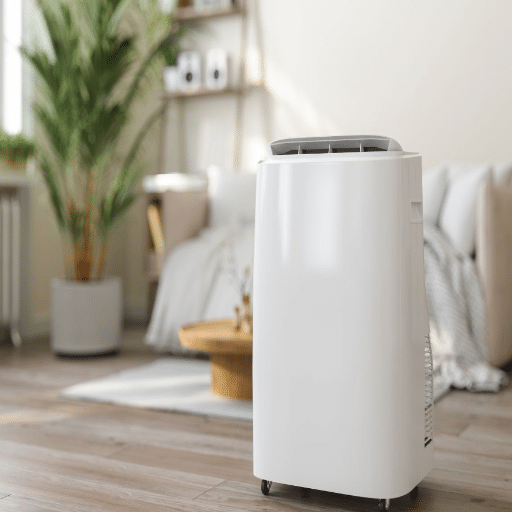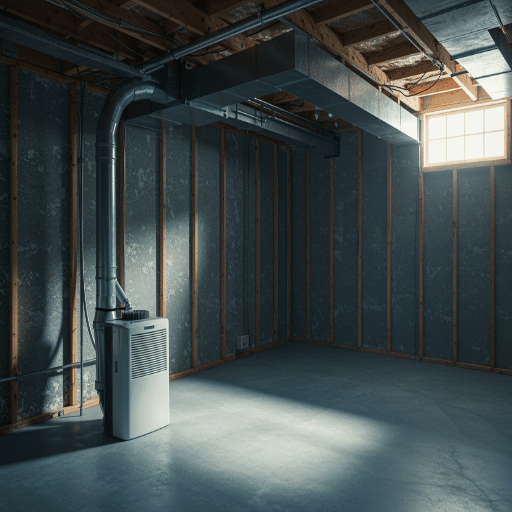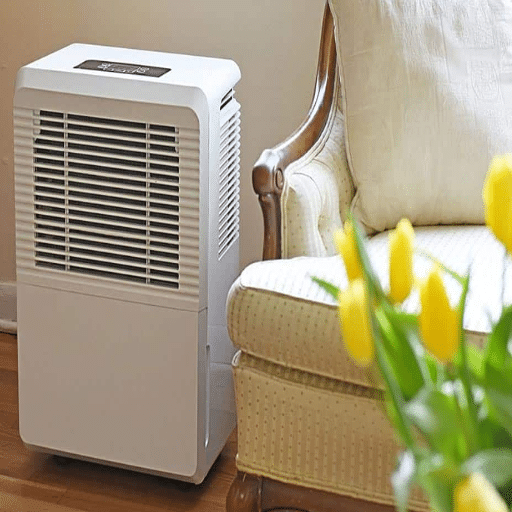Discover how state-of-the-art in-line duct dehumidifiers revolutionize home comfort by controlling humidity throughout your entire house, protecting against mold growth, reducing energy bills, and creating a healthier living environment for you and your family.
Keeping your home comfortable and healthy is not easy, particularly if you have to deal with excessive humidity. High moisture content can adversely affect air quality and cause mold growth, resulting in structural damage and high energy bills. The in-line duct dehumidifier, a state-of-the-art device, is here to help—making it easy to control humidity all over your house at once. This comprehensive guide discusses why this remarkable innovation is considered revolutionary technology for homeowners who demand efficiency, comfort, and long-term savings.
Understanding Ducted Dehumidifiers

Ducted dehumidifiers are designed to manage and lower humidity levels throughout the entire house. They become part of the HVAC system of the house, treating the air while it circulates. These systems create a comfortable environment by removing moisture and, in that way, protect against mold growth, musty smell, and structural damage due to high humidity issues.
What is a Ducted Dehumidifier?
A ducted dehumidifier is a mighty and efficient system devised for controlling humidity levels in an entire house by incorporating itself directly into the ductwork of a home’s HVAC system. Unlike portable dehumidifiers, which are usually limited to single rooms, ducted dehumidifiers can handle humidity in large areas, thus providing the whole house with consistent air quality throughout.
How It Works
- Air Intake: The system pulls moist air via the ducts
- Moisture Removal: Treats air by removing extra water vapor
- Air Distribution: Sends dry air back throughout the house
- Continuous Circulation: Maintains optimal humidity levels consistently
Modern Technology Benefits:
- Noiseless functioning for peaceful home environment
- Energy-saving operation reducing utility costs
- Invisible operation maintaining home aesthetics
- Prevention of mold growth and bad smells
- Protection against structural house damage
- Improved comfort and health in indoor environment
How Ducted Dehumidifiers Work
Ducted dehumidifiers function by becoming an integral part of a home’s HVAC system or ducting. Understanding the process helps homeowners appreciate the technology and efficiency of these systems.
| Step | Process | Result |
|---|---|---|
| 1. Air Intake | Humid air sucked from indoor space | System captures moist air for processing |
| 2. Cooling | Air passes through evaporator coil, cooled below dew point | Water vapor condenses into droplets |
| 3. Collection | Condensed water collected and drained | Moisture removed from air through drainage system |
| 4. Reheating | Dry, cool air passes through condenser coil | Air heated to pleasant temperature |
| 5. Distribution | Processed air sent back to indoor environment | Comfortable, dehumidified air circulates throughout home |
Modern Technology Features
Energy-Efficient Compressors
Advanced compressor technology reduces power consumption while maintaining optimal performance for lower utility bills.
State-of-the-Art Humidity Sensors
Precise sensors continuously monitor humidity levels and automatically adjust system operation for optimal comfort.
Smart Home Integration
Connect to mobile phones and automated systems for real-time monitoring and control from anywhere.
Uniform Coverage
Integration with home ducting guarantees consistent humidity control in all areas throughout the house.
Benefits of Using a Ducted System
| Benefit | Description | Impact |
|---|---|---|
| Consistent Indoor Climate | Equal airflow throughout house maintaining comfortable temperature and humidity | Especially beneficial in large houses or buildings requiring uniform air quality |
| Energy Efficiency | Latest technology for optimal operation, often less consumption than multiple standalone units | Reduced utility bills through smart sensors and integrations |
| Aesthetic Appeal | Discreet and hidden, unlike wall-mounted or portable units | Vents are subtle and can match any interior style |
| Advanced Control Features | Compatible with mobile apps and smart home systems | Remote monitoring, adjustment of settings, performance checking, and scheduling |
| Enhanced Air Quality | High-efficiency filters remove dust, pollen, and airborne particles | Particularly beneficial for people with allergies or respiratory illnesses |
Key Features of the Aprilaire E100

The Aprilaire E100 represents cutting-edge technology in whole-house dehumidification, offering exceptional performance and convenience for homeowners.
High Capacity Dehumidification
Processes up to 100 pints daily, perfect for large houses or areas with extremely high humidity, ensuring a comfortable and healthy environment.
Energy Efficiency
Energy Star Certified – Well-engineered to deliver best performance while using least energy, lowering electricity bills long-term.
Compact Design
Slim and lightweight design makes it easy to fit in tightest spaces, adapting to different installation requirements without losing operational ability.
Built-in Control Options
User-friendly digital display ensures easy monitoring of humidity, scheduling, and precise climate control.
Robust Air Filtration
Modern filtration technology eliminates airborne pollutants, providing clean and allergen-free air throughout your house.
Durable Build
Aluminum coil construction that doesn’t corrode, ensuring long-term operation even in extreme conditions.
Smart Connectivity
Integrates with smart home systems for remote monitoring and control, offering ultimate convenience and assurance.
Specifications and Capabilities
| Specification | Details |
|---|---|
| Moisture Removal Capacity | Up to 100 pints daily under AHAM conditions – perfect for basements, crawl spaces, and whole house |
| Energy Efficiency | ENERGY STAR® certified with cutting-edge technology minimizing energy use while delivering best performance |
| Design | Compact structure easily blending into narrow spaces without losing power |
| User Interface | Clear, easy-to-use controls with different display options for simple setup and observation |
| Certification Standards | Built to meet rigorous standards guaranteeing long-lasting reliability and robustness in adverse environmental conditions |
Installation Requirements
Critical Installation Considerations
- Power Supply: Stable, continuous connection required; dedicated electrical circuit recommended with proper voltage and current specifications
- Space and Ventilation: Minimum 2-foot clearance around machine for proper ventilation, cooling, and easy maintenance access
- Environmental Conditions: Must conform to certified operating temperature and humidity ranges; avoid extreme temperatures, high humidity, or water proximity
- Connectivity: For networking features, ensure reliable internet access or wired connections for smooth data transmission and remote monitoring
Energy Efficiency Ratings
Energy efficiency ratings are a universal scale indicating the energy efficiency of a machine or device, helping consumers make wise purchasing decisions. Energy-efficient rated devices use less electricity while functioning at their best, resulting in lower energy bills long-term.
Why Energy Efficiency Matters:
- Lower electricity bills through reduced power consumption
- Environmental protection through decreased carbon footprint
- Long-term savings that offset higher initial costs
- Compliance with sustainability goals and regulations
Look for certifications: ENERGY STAR or equivalent local standards – these labels mean products follow stricter guidelines for energy conservation.
Humidity Control in Whole-House Systems
Optimal humidity levels are necessary for a comfortable and healthy living environment. Whole-house systems like humidifiers and dehumidifiers are becoming increasingly popular for their capability to control indoor humidity levels efficiently.
Importance of Maintaining Optimal Humidity Levels
Keeping your house’s humidity level in the right range is important for health and comfort. Specialists suggest that the perfect indoor humidity level is between 30% and 50%.
Too Low Humidity (<30%)
- Dry skin and irritation
- Respiratory discomfort
- Increased static electricity
- Cracked wood furniture
- Damaged flooring
Too High Humidity (>50%)
- Mold growth
- Dust mite proliferation
- Musty odors
- Wood furniture damage
- Flooring deterioration
- Structural damage
Modern Solutions for Humidity Control
- High-efficiency dehumidifiers: Remove excess moisture effectively
- Whole-home humidifiers: Add moisture when air is too dry
- Smart technology integration: Real-time data and automated adjustments
- Energy-efficient operation: Lower utility costs while maintaining comfort
- Long-term benefits: Improved indoor air quality and personal comfort
How Ducted Systems Regulate Humidity
Ducted systems are very effective in controlling humidity through the circulation of properly proportioned air, preventing indoor moisture accumulation.
Advanced Technology Features
- High-tech sensors: Continuously monitor humidity levels
- Smart thermostats: Adapt functioning automatically to create comfortable atmosphere
- Mobile app integration: Set preferences remotely
- Automated schedules: Time-saving and energy-efficient operation
- Dehumidification options: Control humidity at right levels preventing mold growth
- Furniture protection: Preserve furnishings and create healthier living environment
Comparing Whole-House vs. Portable Solutions
| Feature | Whole-House Systems | Portable Solutions |
|---|---|---|
| Coverage Area | Entire home – uniform temperature and humidity control | Single room or specific area only |
| Installation | Professional installation required, integrated with HVAC | No installation needed, plug-and-play |
| Energy Efficiency | Highly efficient, especially with smart technology | Less efficient for whole-home humidity control |
| Cost | Higher initial investment | Very affordable upfront |
| Aesthetics | Hidden, discreet, maintains interior design | Visible unit in room, may affect decor |
| Automation | Full automation and smart home integration possible | Limited automation features |
| Long-term Savings | Significant savings over time through efficiency | Lower long-term savings |
| Best For | Homeowners seeking comprehensive solution | Renters or those in small apartments |
Choosing the Right Ductable Dehumidifier

It is very important to take into account several critical factors when choosing the right ductable dehumidifier to guarantee best performance and user satisfaction.
Factors to Consider When Selecting a Model
Capacity and Space Size
Figure out how big of a space you want to dehumidify. Higher pint capacities operate efficiently in larger areas and remove moisture effectively.
Energy Efficiency Rating
Go for models with Energy Star ratings – they cut down on electricity bills and reduce environmental impact. High EER ratings save money long-term.
System Compatibility
Ensure compatibility with existing ducted or HVAC systems. Proper integration is paramount for successful dehumidification without interrupting workflow.
Smart Controls
Consider units with smart home integration, allowing remote monitoring and control via mobile apps for ultimate convenience.
Noise Levels
Check decibel ratings to ensure quiet operation, especially important for residential installations near living areas.
Air Filtration
Advanced filtration systems provide additional benefits by removing airborne pollutants and improving indoor air quality.
Common Mistakes to Avoid
- Ignoring Energy Efficiency Ratings: Appliances with good ratings may cost more initially but save significantly by cutting electricity bills throughout their lifespan
- Focusing Solely on Initial Costs: Cheap devices might attract with price, but higher power consumption causes more spending over time
- Neglecting Maintenance: Not cleaning filters, vents, or critical parts makes appliances work harder, consuming more power and generating higher bills
- Overlooking Product Reviews and Data Trends: Consumer reviews and market trends provide valuable insights about sustainability and product performance
Top Brands and Models on the Market
Analyzing recent market data reveals that certain brands consistently dominate consumer interest due to their innovation and commitment to quality.
| Brand | Notable Features | Why Popular |
|---|---|---|
| Aprilaire | E100 model with 100-pint capacity, Energy Star certified, smart connectivity | Industry leader in whole-house dehumidification with proven reliability |
| Santa Fe | High-capacity models, robust construction, excellent warranty | Trusted for commercial and high-demand residential applications |
| Honeywell | Smart home integration, energy efficiency, user-friendly controls | Well-established brand with extensive product range and support |
| Carrier | HVAC integration expertise, professional-grade performance | Seamless integration with existing Carrier HVAC systems |
Integrating a Ducted Dehumidifier with Your Ventilation System
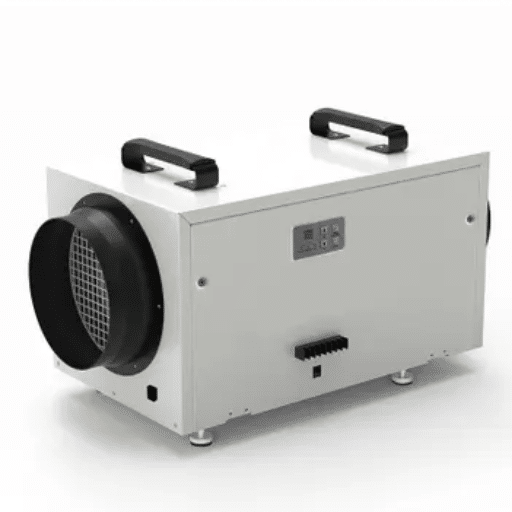
Connecting a ducted dehumidifier to your ventilation system offers several benefits for the indoor environment of your home and energy efficiency. Recent studies show that many homeowners are seeking methods to improve indoor air quality and control humidity for comfort and mold prevention.
Benefits of Integration
- Maintains desired humidity level throughout entire house
- Consumes less energy than separate air quality systems
- Improves overall indoor air quality
- Enhances health and wellbeing of occupants
- Preserves household materials and furnishings
- Creates eco-friendly, sustainable home environment
Designing a Comprehensive Ventilation Plan
Developing a holistic ventilation system entails modern technologies and in-depth understanding of your space’s air quality requirements.
Key Planning Steps
| Step | Action | Purpose |
|---|---|---|
| 1. Assessment | Analyze house layout, thermal insulation, and pollutant sources | Determine appropriate ventilation type and strength |
| 2. System Selection | Choose balanced ventilation system (ERV or HRV) | Fresh air intake and stale air exhaust simultaneously with energy recovery |
| 3. Smart Integration | Connect with programmable thermostats and IoT-enabled monitors | Real-time information and adaptive seasonal adjustments |
| 4. Standards Compliance | Follow ASHRAE recommendations and guidelines | Ensure effective and compliant system design |
| 5. Maintenance Planning | Establish filter changing and system care schedule | Keep system efficient and functional long-term |
Recommended Ventilation Technologies
- Energy Recovery Ventilators (ERVs): Ventilate while recovering energy efficiently, ideal for humid climates
- Heat Recovery Ventilators (HRVs): Excellent for cold climates, minimizing heat loss during ventilation
- Programmable Thermostats: Automated control based on occupancy and time of day
- IoT-Enabled Air Quality Monitors: Real-time monitoring and adaptive adjustments
Compatibility with Existing HVAC Systems
When modernizing your present HVAC system with new components, compatibility is the most important factor. Fortunately, most modern HVAC upgrades are intended to interconnect easily with older systems.
Easy Integration Options
- Smart thermostats compatible with most systems via Wi-Fi and Bluetooth
- High-efficiency filters easily installed in existing ductwork
- Hybrid add-ons like heat pumps integrate without full infrastructure replacement
- Zoned heating options for targeted climate control
- Standard communication protocols simplify installation
Professional Consultation Recommended: Consult licensed HVAC expert regarding system specifications and necessary adjustments for optimal compatibility and performance.
Maintenance Tips for Long-Term Performance
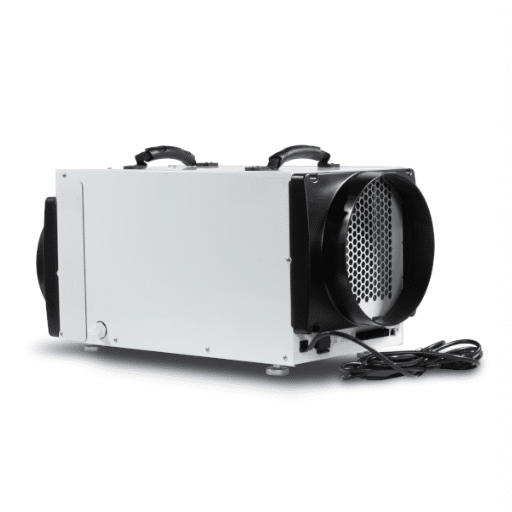
Proper maintenance is essential for maximizing the lifespan and efficiency of your ducted dehumidifier system. Following these guidelines will ensure optimal performance for years to come.
Regular Filter Replacement
Replace or clean air filters every 1-3 months based on type and usage. Dirty filters reduce airflow by 15% and make system work harder, increasing energy consumption.
Annual Professional Inspections
Certified technician should inspect system yearly. Professional maintenance may enhance performance by up to 20% and spot potential issues before costly repairs.
Keep Outdoor Units Clear
Check outdoor unit frequently for dirt, leaves, or obstructions. Blocked condenser units can cause overheating and reduced performance.
Seal and Insulate Ductwork
Unsealed ducts can waste 20-30% energy. Seal leaks with mastic or metal tape and install insulation to improve circulation and reduce energy loss.
Utilize Programmable Thermostat
Adjust temperature settings according to daily routine. Can cut heating and cooling bills by up to 10% annually by preventing energy waste during absence.
Monitor Drainage System
Check drain hose for clogs regularly. Ensure condensate flows freely to prevent water backup and potential system damage.
Maintenance Schedule Checklist
| Frequency | Maintenance Task |
|---|---|
| Monthly | Check and clean filters, inspect drainage |
| Quarterly | Clean unit exterior, check outdoor unit clearance |
| Semi-Annually | Inspect ductwork for leaks, verify thermostat settings |
| Annually | Professional inspection, full system cleaning, refrigerant check |
References
-
Investigation of Energy Impacts of Ducted Dehumidifier Duct Configurations – A study from the University of Central Florida exploring the energy impacts of ducted dehumidifier configurations.
-
Energy and Latent Performance Impacts from Four Different Dehumidifier Configurations – Research from the Florida Solar Energy Center on the energy performance of ducted dehumidifiers.
-
Development of an Integrated Residential Heating, Ventilation, and Dehumidification System – A study from the University of North Texas discussing the integration of ducted dehumidifiers into residential HVAC systems.
Frequently Asked Questions (FAQ)
What is an inline duct dehumidifier?
An inline duct dehumidifier is a device that removes moisture from the air that is being circulated through the ducting system of your house. It is commonly found within existing HVAC systems which enables the whole house dehumidification process as it treats the air before it even gets mixed up through the different areas of the house.
How does it improve air quality?
The presence of a ducted dehumidifier makes the air in your house cleaner as it suck out the humid air from the environment and makes it unwelcoming for the growth of mold, mildew, and dust mites besides other allergens. The systems maintain the humidity levels at the optimum rate that is usually in the range of 30% and 50% RH hence protecting the house’s structure and people’s health.
Is an in-line duct dehumidifier suitable for large spaces?
Absolutely, in-line duct dehumidifiers can be used in large settings because they are capable of handling vast amounts of moisture. The commercial Moiswell 145-pint dehumidifier is an example of a model that is made to work with great moisture loads, meaning it can be applied in both residential and commercial settings.
How a ducted dehumidifier is installed?
Entering a ducted dehumidifier installation process typically starts by connecting the device to the pre-existing ductwork, and at the same time, good airflow and drainage should be assured. A drain hose may be used in crawlspace areas or a pump and drain hose may be applied where gravity drainage isn’t feasible. A professional installer is generally suggested because the device should be set up to save both energy and work optimally.
How is a whole-house dehumidifier different from a portable one?
Whole-house dehumidifiers, as in the case of a ducted system, are part and parcel of the HVAC system and dehumidifying the entire house is much easier than with a portable unit that works on only one room at a time. Whole-house systems can offer better moisture control, lower energy costs, and also improved air circulation as compared to portable models.
How to keep an inline duct dehumidifier in good condition?
To keep your inline duct dehumidifier in good shape, you will need to change the filters regularly, keep the unit clean, monitor the drain hose for clogs, and so on. It is vital that you check the moisture levels and confirm that the machine is working properly in order for it to be able to draw moisture from the air. Cleaning of the unit regularly extends its lifespan and at the same time, it keeps the unit running at its optimum performance.
Is a whole-house dehumidifier worth the energy costs?
The energy costs of operating a whole-house dehumidifier may differ according to the capacity of the unit, the moisture levels, and the frequency of operation. Though, many modern units are engineered to be energy efficient that their use might end up costing less than the use of older decapods. The installation of a high-capacity unit can provide energy savings as it effectively controls the moisture levels without drawing too much power.
Will a dehumidifier assist in water damage restoration?
A dehumidifier is a crucial device in the water damage restoration process. It acts to suck up the water vapour from the air and surfaces thus keeping the growth of molds and mildews at bay. Using a commercial dehumidifier with a drain hose can quicken the drying up process, thus not only the structures of the house will be preserved but also thorough restoration will be guaranteed.

